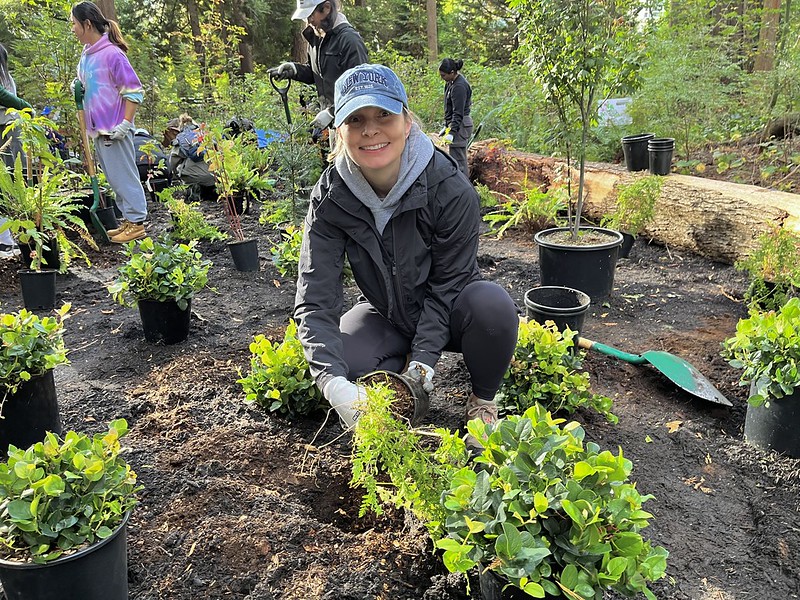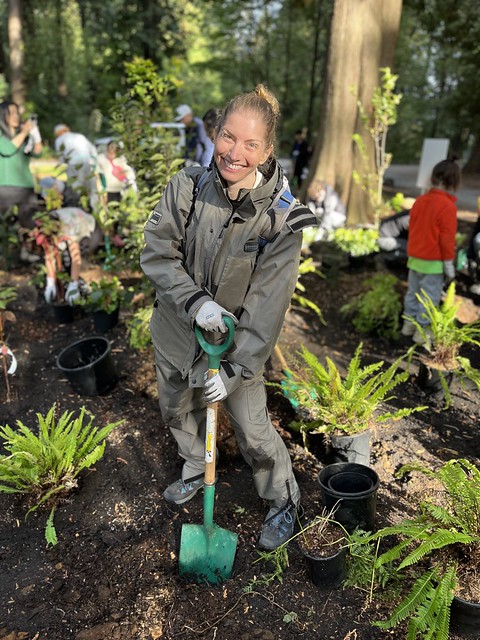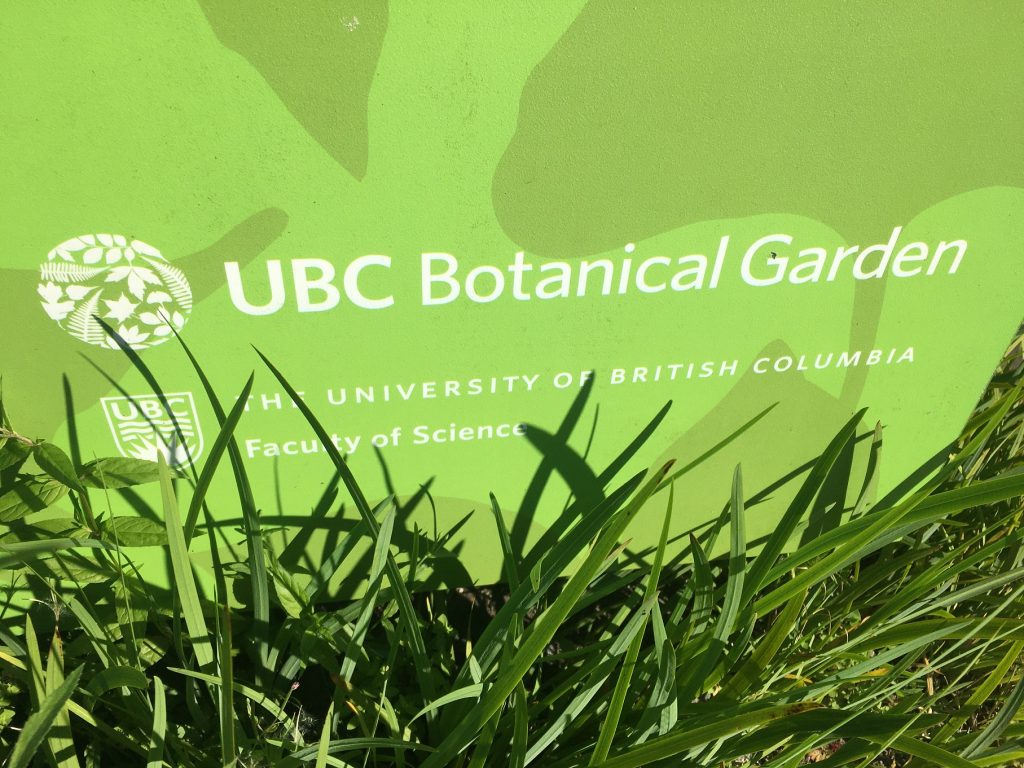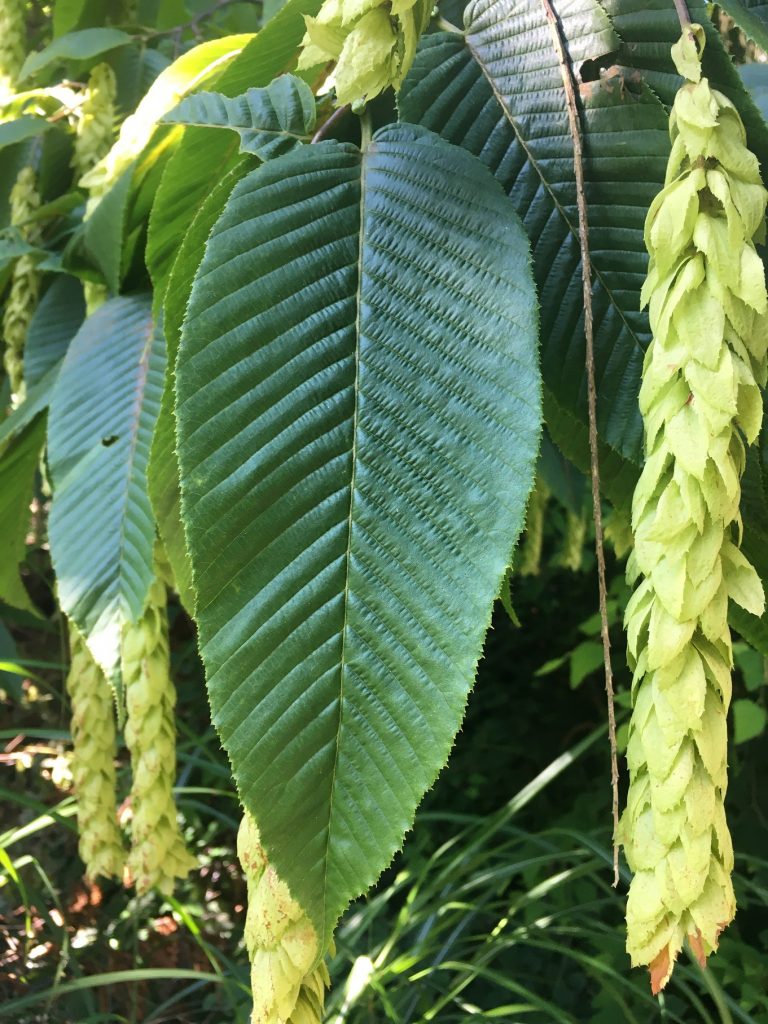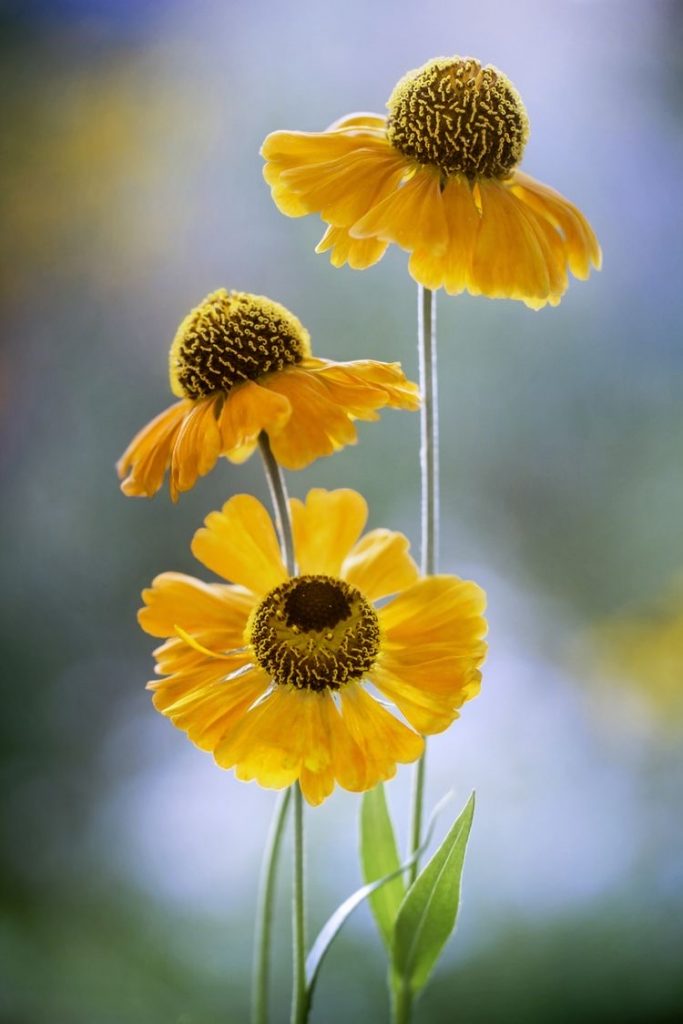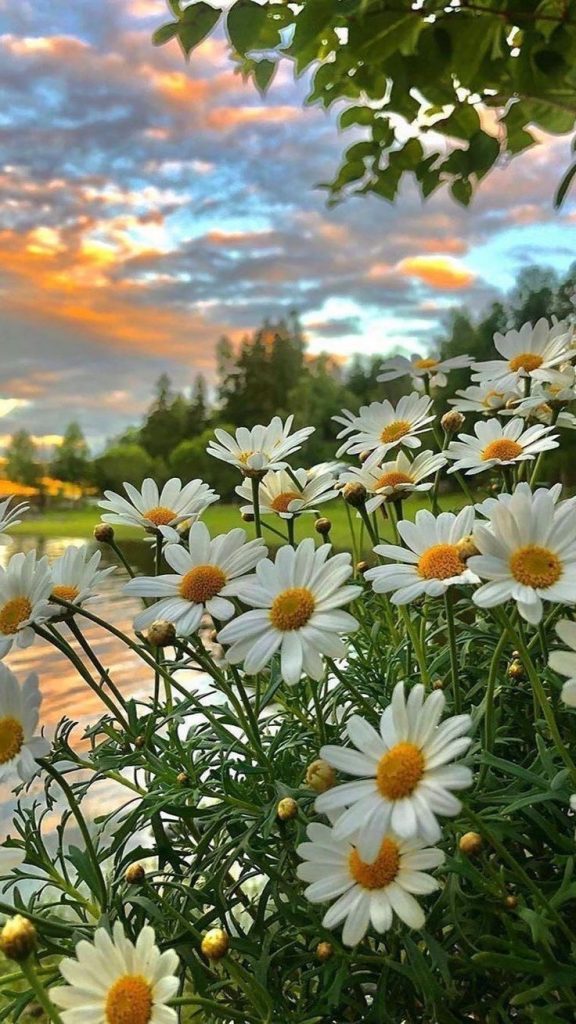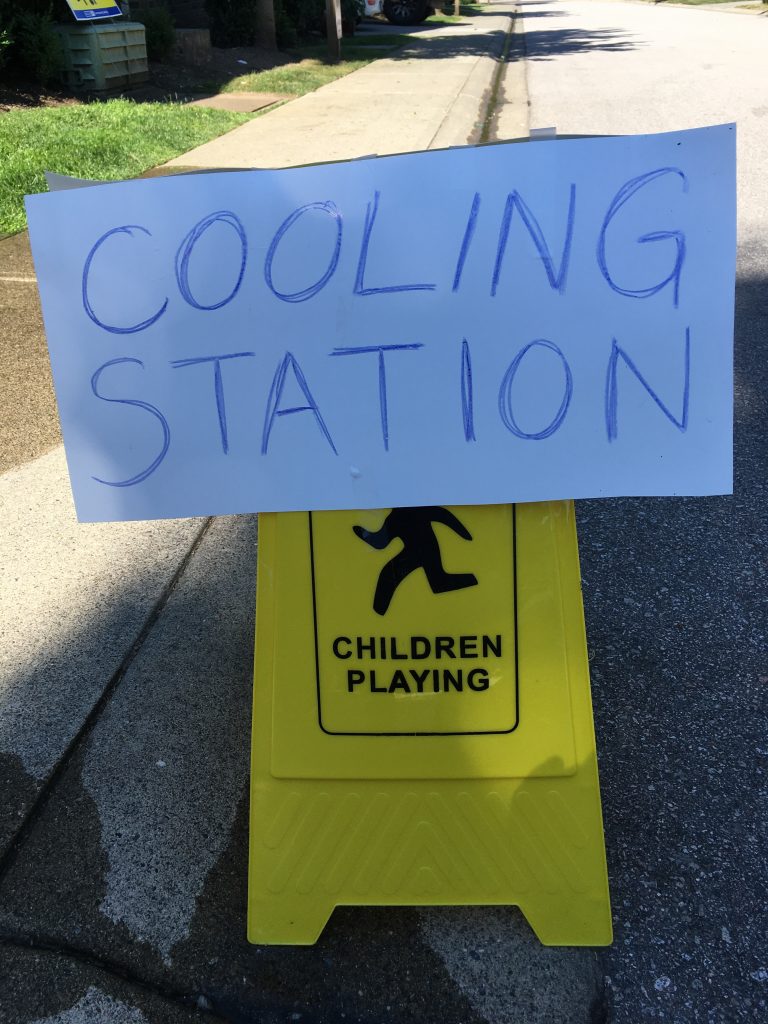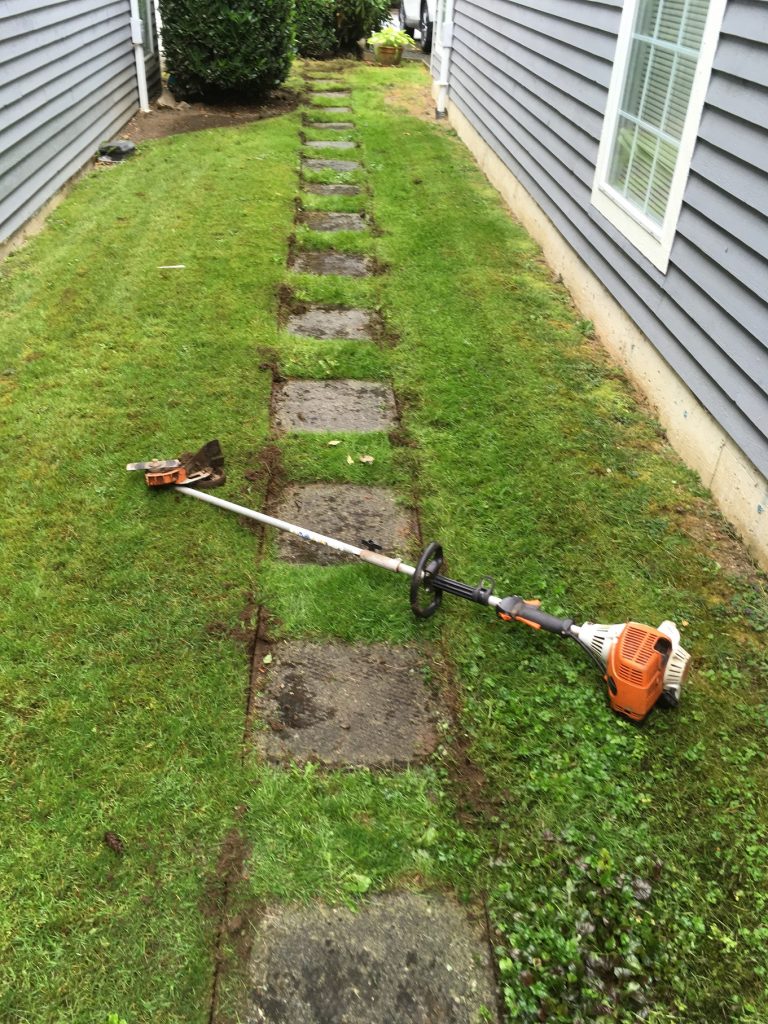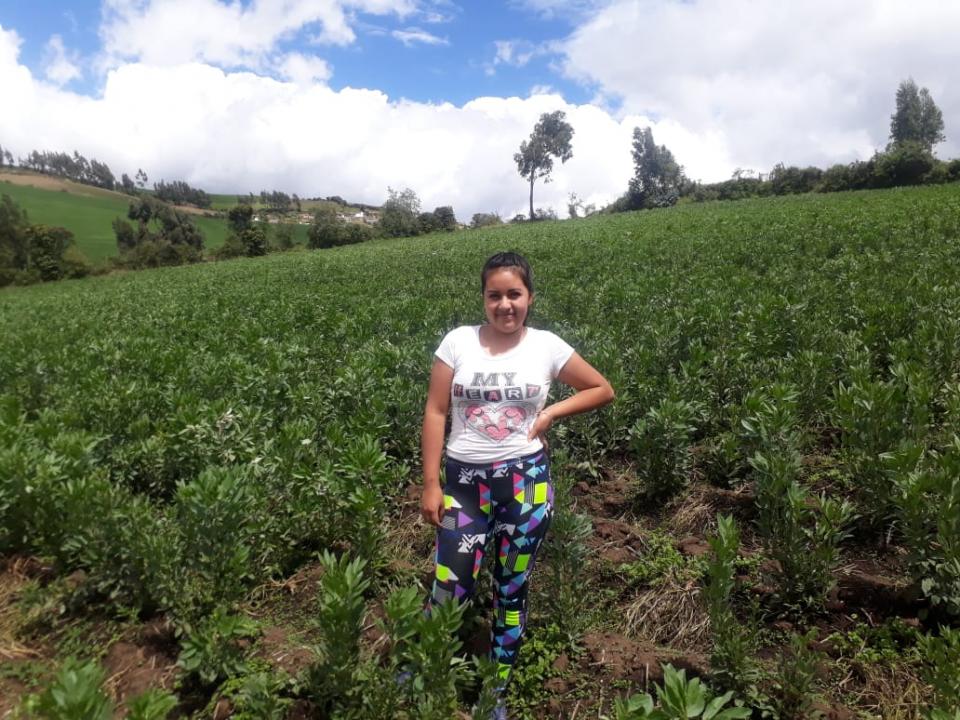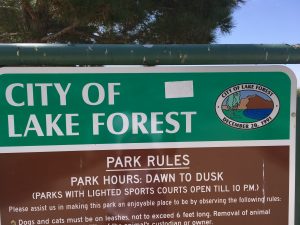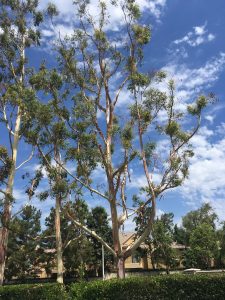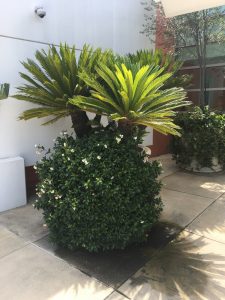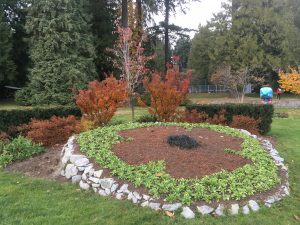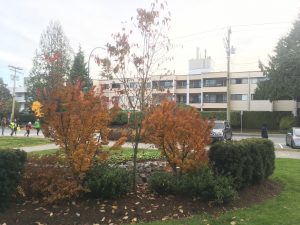Volunteering post-COVID
I love volunteering when it involves tree and shrub planting but when I volunteered recently in Pitt Meadows, it was my first time since before the pandemic. After the pandemic I’ve been super busy working as my housing costs shot up and my teenagers started growing and driving.
So I was all excited when I found time to join a group of volunteers from the Lower Mainland Green Team in Hoffman Park, right in Pitt Meadows, just off Harris Road. I had driven past the small park many times but this was my first visit there.
Well-organized!
I must say that the event was extremely well organized. The plants were all nicely laid out, tools and gloves were available and the check-in was smooth: digital and on paper! Timbits and coffee also helped. The only weird part was the introductions with personal pronouns; this is the new, post-COVID world, and my discomfort clearly highlights my advancing age.
I gave my name and city and left it at that. I’m clearly a dude but if you somehow can’t tell, I won’t be offended.
After introductions came planting demo by Ashton, a beautiful blond who ran the show, and her experience showed. I would possibly include a note on backfilling tree planting holes so that air pockets are eliminated but we don’t have to worry. All of the plants are native and I’m confident they will do well in the park.
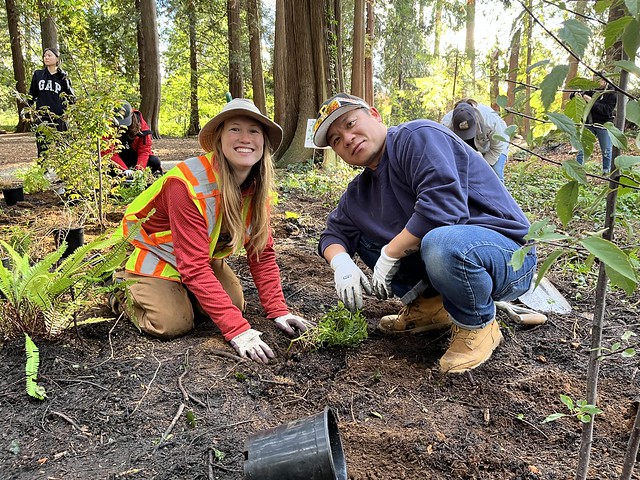
Planting!
There is something beautiful about installing new native plants in a public park. I found a corner and went to it, planting mainly vine maples (Acer circinatum) and Red-osier dogwoods (Cornus sericea). Then there was salal (Gaultheria shallon) and bracken fern (Pteridium aquilinum).
After planting we top-dressed the planting area with new soil and then it was time to pull out ivy and blackberry from the park. This is where I quietly excused myself, not to avoid labour but to drive to White Rock where I garden for rich people.
Benefits
Volunteering is amazing! It feels good to give your time for a community project. The experience can improve your resume, improve your network, and teach you about native British Columbia plants. Even I learned something new: I didn’t know the scientific name of bracken fern and one plant was completely new: Tellima grandiflora (Fringecup). This is one of those herbaceous perennials which works the soil nicely.
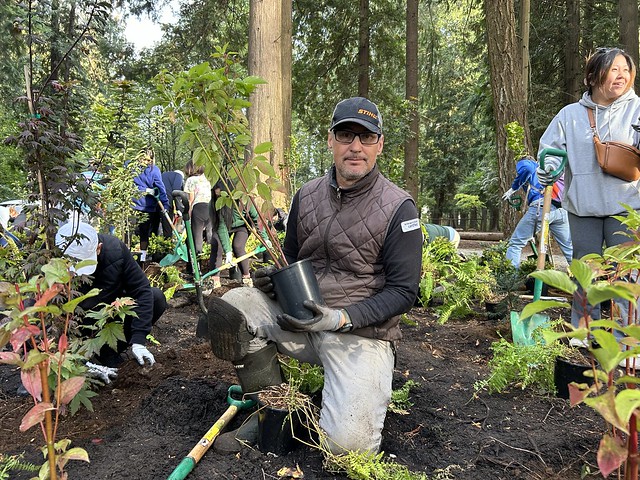
Do it, if you can
There are many of these projects planned in the Lower Mainland so sign up and have some fun. I will stop by Hoffman Park next spring to see how the plants are doing. Maybe I will turn it into another blog post. I highly recommend this experience.
